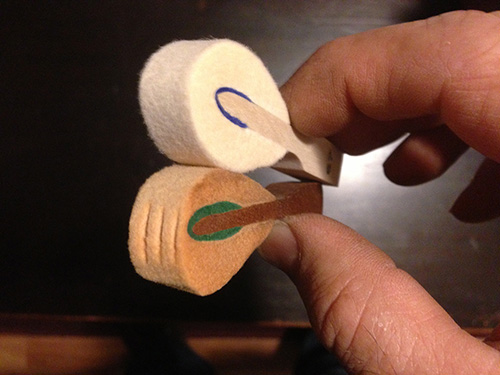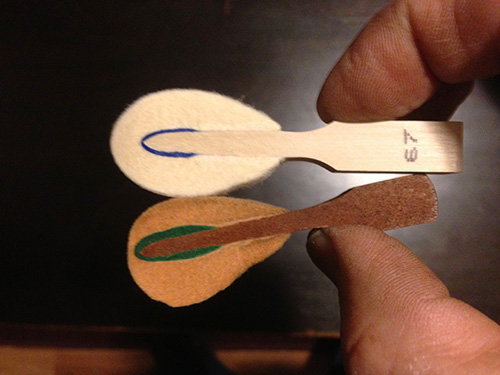Voicing
Voicing means changing the tone of the piano by sanding, needling or applying chemicals to the felt of the hammers. There are three reasons for voicing:
Worn Hammers - After several years of playing the felt on the hammers will wear down, and grooves will form on them from striking the strings. When the grooves become too deep, the resilient shape of the hammers is lost and the tone becomes less pleasing. This happens so gradually, that the pianist will probably hardly notice the change.
New versus grooved, worn down hammers. Notice how little felt is left over the wood moulding.
Overall Tonal Change - Another aspect of voicing involves making the tone of the entire piano brighter or more mellow. Making it brighter is done, either by ironing or fine sanding the hammers, or by applying a chemical felt hardener. Making it more mellow is usually done by sanding the hammers, or pricking the hammers with needles, which softens the felt.
Evenness of Tone - Sometimes some individual notes stick out as too bright, or not bright enough compared to the rest. In this case some fine voicing is required, which involves sanding and needling, to even out the tone so that it is consistent throughout the piano.
Whereas voicing can sometimes make large changes in the quality of the tone, it should be kept in mind that only so much can be done, given the inherent nature and tone of each individual piano.
When voicing a piano, the technician will probably want the pianist nearby to listen and tell him which type of tone they prefer.
To request this service
or call



